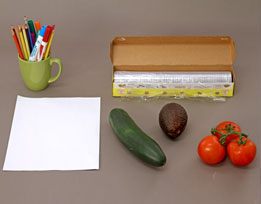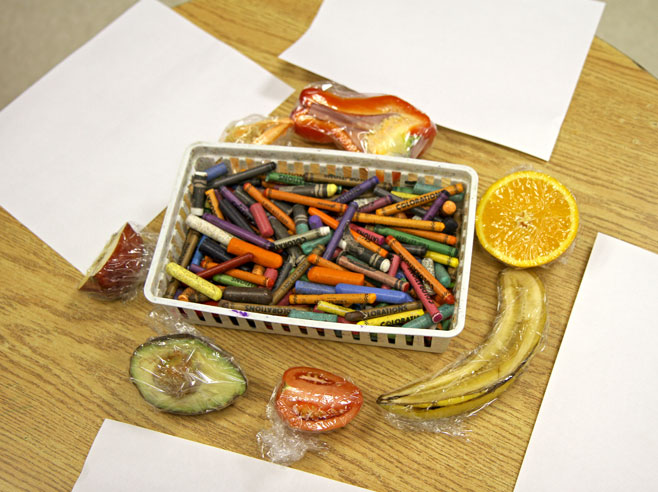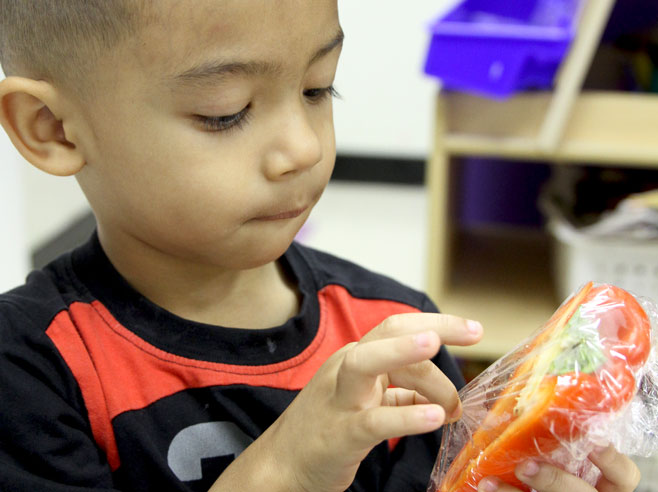Children examine and draw a selection of fruits and their seeds.
Materials

- Selection of the fruits shared during the read-aloud of A Fruit Is a Suitcase for Seeds. These fruits vary in seed quantity, color, size, and distribution (kiwi, tomato, orange, cucumber, melon, pomegranate, peach, nectarine, plum, avocado)
- Drawing paper
- Markers, crayons, or colored pencils
- Optional: Plastic wrap
- Optional: Knife
- Optional: Cutting board
- Optional: Seeds removed from some of the fruits above, cleaned and dried ahead of time
- Optional: Magnifying glass
Preparation
- If using a fruit that was not already prepared for the Circle Time A Fruit Is a Suitcase for Seeds activity, cut it in half to reveal the seeds and wrap in clear plastic wrap.
- Optional: Remove, clean, and dry pits and seeds from some of the fruits above.
Directions: Lessons 9, 12
Learning Center
- Encourage children to examine the fruits and seeds closely, using a magnifying glass if they wish. Then invite them to draw what they see.
- Invite children to describe and compare the seeds and fruits. Possible discussion ideas:
- We have lots of different fruits and seeds here! Who would like to share an observation about some of these fruits and seeds? What part of the plant holds seeds? What happens if you plant these seeds?
- Do you think there are more (oranges) or (orange) seeds? Let’s count to find out.
- Can you find two fruits with just one big seed?
- How many seeds does the (plum) have? Touch the (plum) seed. How does it feel?
- How many seeds do you see in the (orange)? How would you describe the seeds in the (orange)?
- Let’s look carefully at this (kiwi) and its seeds. What part of the plant is the (kiwi)?
- Then invite them to draw the (kiwi) and seeds to record what they see. Encourage them to write or dictate the parts of the plant they drew and how each part helps the plant grow.
- What questions do you still have about these fruits and seeds?


